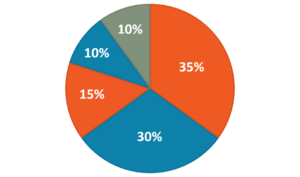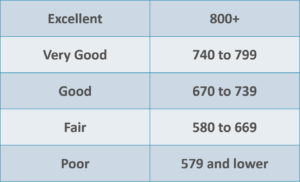Comparing Tax Transcript Retrieval: IVES 4506-C v. Halcyon’s Tax Wallet
Income verification continues to be one of the most critical—and complex—steps in the mortgage underwriting process. Whether you're working...
A Fair Isaac (FICO) credit score can be generated for anyone with at least one reported credit tradeline in the past 12 months and is based on data from the three credit bureaus: Equifax, Experian, and TransUnion. All three bureaus generate a separate credit score, each being slightly different due to data variances in the consumer profile.

Payment History (35%): late payments, tax liens, bankruptcies, etc.
Accounts Owed (30%): outstanding balances on accounts
Length of Credit History (15%): the longer your history, the better
New Credit (10%): inquires/applications for new credit accounts
Credit Mix (10%): the mix of credit cards, retail accounts, loans, etc.
MYTH: Paying off credit cards, collection accounts, tax liens, etc. will always increase the FICO score
FACT: The FICO model score reflects updates from "Date of Last Activity," so paying off an old collection account can count against your borrower
MYTH: Closing accounts with zero balances will increase the FICO score
FACT: Closing accounts can raise the overall credit utilization, which can end up decreasing the FICO score
MYTH: Public records, judgments, liens, etc. negatively impact the FICO score forever
FACT: Most are removed from a credit file after 7 years (10 years in California)
> FICO scores can range from 300 to 850 under the following categories:

>> Our CreditXpert Solutions Suite can improve your borrower's score by up to 50 points:
Credit Assure™
Automatically scans the credit report and shows you the increased score that your client could potentially achieve
Wayfinder™
Determines the best actions to take so you and your client know how to increase their credit score
What-if Simulator™
Before taking action, easily plug in custom or predefined scenarios to predict how the score would change
Positive
Paying bills on time
Low balances compared to maximum credit available
Positive credit management over the past 2 years
Negative
Delinquent payments and collections
Opening too many accounts in a short period of time
High total outstanding debt and derogatory public records
Lenders use credit scores to predict how likely a borrower is to repay a new debt based on past credit behavior. FICO scores are also used to determine the type of mortgage, costs, and interest rates.
There are no regulations that state a specific score must be displayed to the consumer, so different entities can choose which score they want to display from the multiple bureau options available to them. On the other hand, lenders are required to pull a specific score for mortgage lending so there’s consistency when making a lending decision.
There could be 3 main causes:
The right partner makes all the difference. With IR, you gain smarter credit and verification solutions, a team that has your back, and a strategy that grows with you.
/Blogs/2025%20Blog%20Posts/2025-09-IVES%204506-C%20vs.%20Halcyon%20Tax/IR_Blog--IVES-4506-C-vs-Haylyon-Tax-Wallet.png)
Income verification continues to be one of the most critical—and complex—steps in the mortgage underwriting process. Whether you're working...
/Blogs/2025%20Blog%20Posts/2025-09-Maximize%20Your%20Existing%20VOA%20Connection/IR_Blog-Understanding-the-cost-of-tax-transcript-retrieval.png)
Reducing borrower friction while maintaining compliance is a constant challenge. Lenders are under pressure to move faster, keep costs down, and...
/blogs/2024-12-AccountChek%20Tips%20and%20Tricks/AccountChek%20Tips%20%26%20Tricks.png)
Turning Bank Data Into Loan Approvals AccountChek Verification of Assets doesn’t just check bank balances–it can also help lenders verify rental...
.jpg)